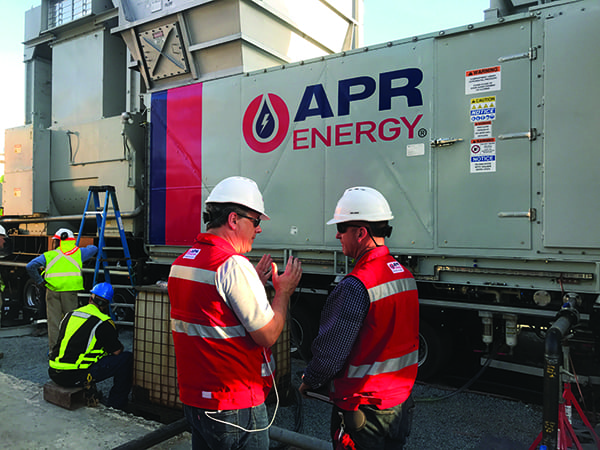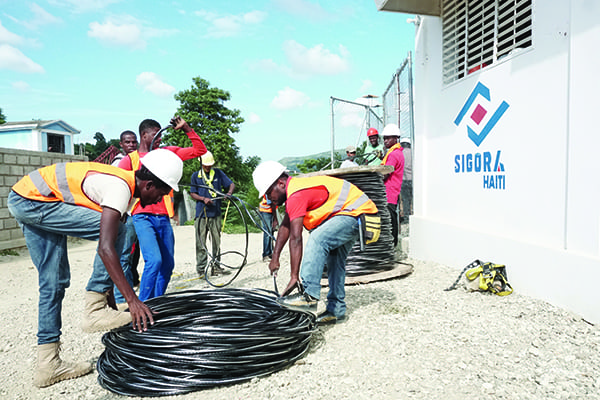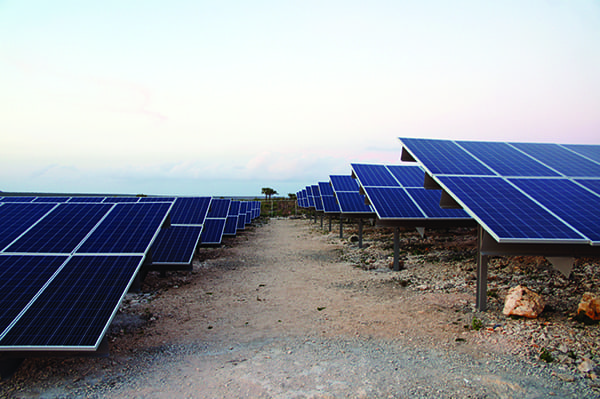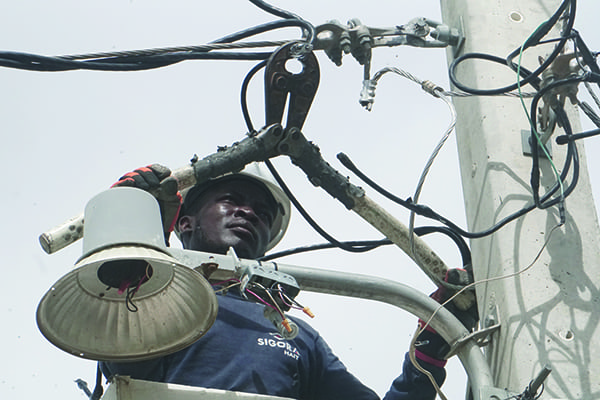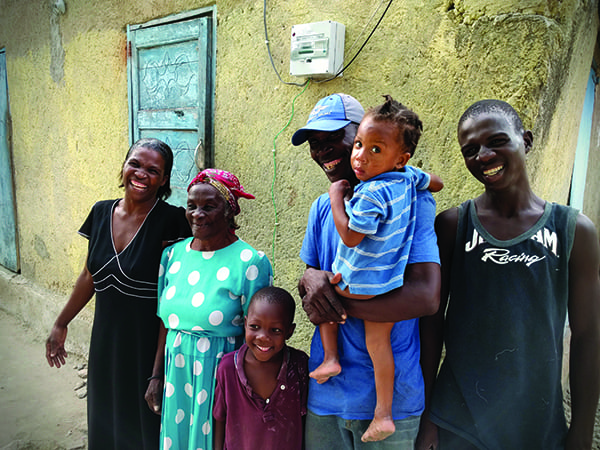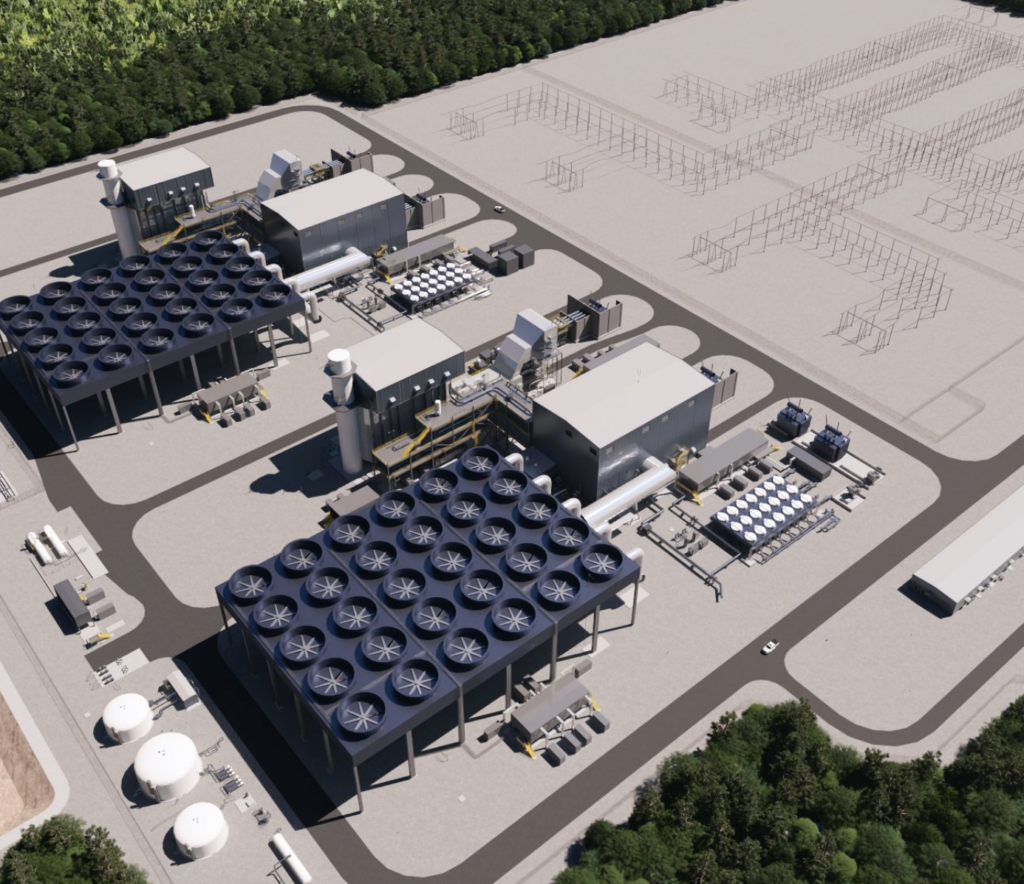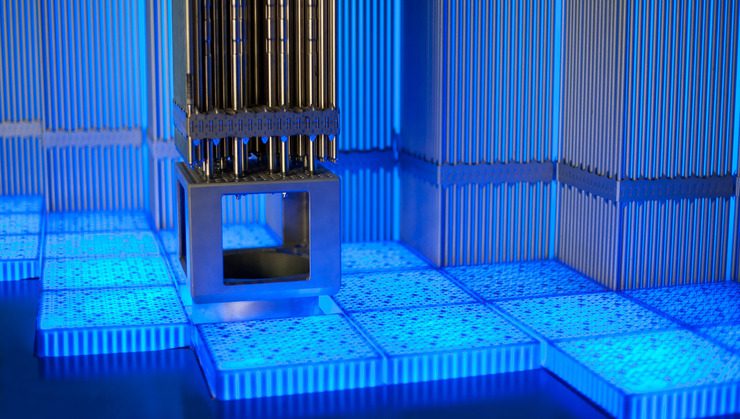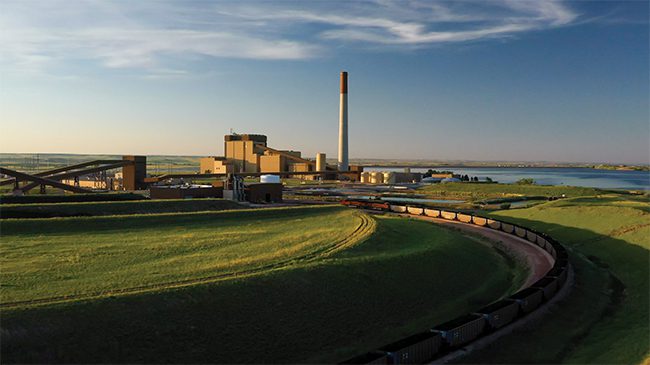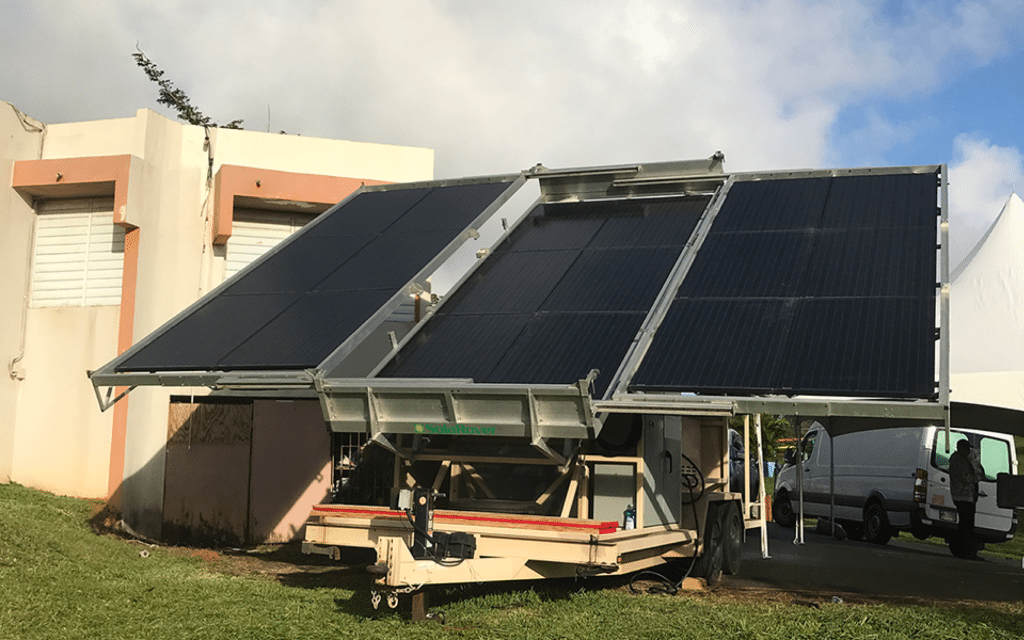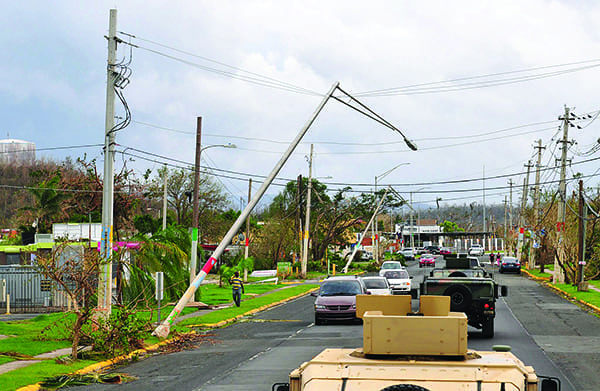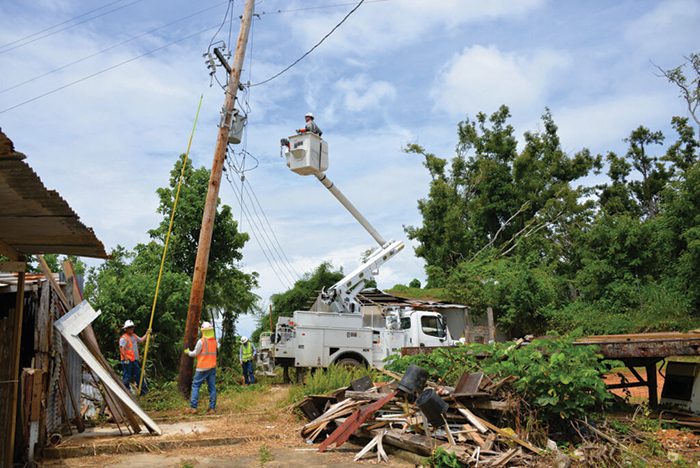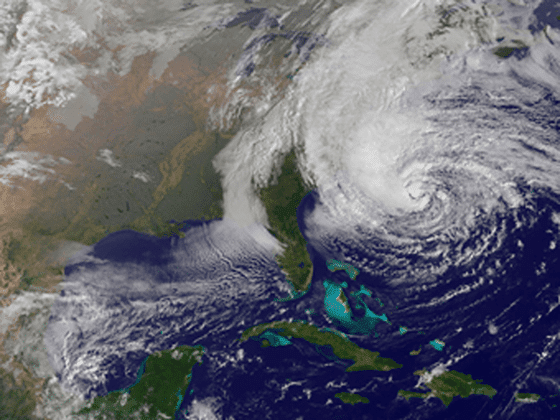As another hurricane season approaches, the lessons learned by energy companies that have repaired power infrastructure in Haiti, Puerto Rico, and other areas provide a path forward for reducing the impact of future major storms.
The devastating hurricanes that roared through the Caribbean in 2017 left millions of people in the dark, and highlighted the challenge of establishing a reliable and resilient electric grid in remote and poverty-stricken areas. The one-two punch of hurricanes Irma and Maria pummeled Puerto Rico, Haiti, Cuba, Dominica, the U.S. Virgin Islands, and the British Virgin Islands, along with other regions, leaving many areas uninhabitable, and cities and towns without power for days, weeks, and months.
The 2018 hurricane season begins on June 1. But the memory of last year’s destruction is not very distant, and as monster storms seemingly become more common, work to heal the still-fresh wounds of a few months ago continues in earnest, along with preparations for what may be to come. To that end, power industry experts are designing and building new electricity infrastructure across the region, in an effort to make the grid stronger, more reliable, and less vulnerable to future hurricanes and tropical storms. Workers from several U.S. utility companies are in the Caribbean, removing debris, installing power poles and generators, and stringing transmission lines.
Hundreds of utility workers arrived in Puerto Rico in late January. Companies have continued to cycle teams to and from the island, where about 15% of the country remained without power more than five months after Maria made landfall on September 20, 2017, knocking out electricity to the entire island and its 3.4 million residents. Irma hit Puerto Rico two weeks earlier, leaving more than 1 million residents without electricity, and thousands of those were still without power when Maria came onshore. The U.S. Army Corps of Engineers has said some areas of the country likely will not see power restored until late May (see sidebar).
Work Continues in Puerto RicoPuerto Rico has been the poster child for the challenge of disaster recovery. In late January, Gov. Ricardo Rosselló announced a plan to privatize the Puerto Rico Electric Power Authority (PREPA), the state-owned electric utility that has been widely criticized for its response to Hurricane Maria, and which filed for bankruptcy protection last July, citing $9 billion in debt. PREPA has suffered from mismanagement and underinvestment for years; its then-executive director, Ricardo Ramos, resigned last November in the wake of questions about his approval of a restoration contract with Whitefish Energy Holdings, a small Montana company that was hired to rebuild the country’s grid. The $300 million contract, awarded without competitive bidding, was soon canceled. PREPA had balked at offers of aid from U.S. utility companies in the aftermath of Maria. Rossello said privatization of PREPA could take 18 months, in part because a federal judge would have to approve any transactions due to the bankruptcy filing. In the meantime, the utilities whose initial offers of help were rebuffed are now working on the island. More than 20 U.S. utilities, including Ameren; Xcel Energy; Norwich (Connecticut) Public Utilities; PPL Electric Utilities; Duke Energy; Southern Company; Florida Power & Light; and others have sent lineworkers and other personnel to Puerto Rico. More than 1,000 lineworkers from across the country have been working on the island, joining staff from the U.S. Army Corps of Engineers (USACE), which has led the planning, coordination, and integration efforts to restore power. Duke Energy has used drones to restring transmission lines. Bryan Williams, the utility’s head of aviation services and unmanned aerial systems, said his team is among the first U.S. operators to use a drone for that purpose, as he discussed Duke’s efforts in Puerto Rico during POWER’s Connected Plant Conference in Charlotte, North Carolina, in February. Irving, Texas-based Fluor Corp. has played a large role in restoration efforts on the island, receiving task orders from the USACE that could total more than $1 billion. Fluor estimates 80% of Puerto Rico’s grid, which includes 2,400 miles of transmission lines, 30,000 miles of distribution lines, and 300 substations, was affected by Hurricane Maria. Michigan-based DTE Energy in late January sent 80 lineworkers and other personnel to Puerto Rico, primarily to help restore power to the northeastern part of the island. The utility said its workers would remain on-site for 30 days. The utility, in a statement to POWER, said, “DTE Energy’s crews are energized and ready to help restore power for the residents and businesses in Puerto Rico. Our employees all volunteered for this assignment because of their strong desire to give back. We have colleagues who moved to Michigan from Puerto Rico to work for DTE—and we have heard their stories about the hardships their families and friends have faced.” DTE, like other utilities now in Puerto Rico, said it was asked to join the restoration effort in mid-December; it began moving equipment from Michigan to Virginia the day after Christmas. The equipment, including vehicles and bucket trucks, along with diggers, was loaded onto a barge in Norfolk, Virginia, headed for Puerto Rico. APR Energy, a Jacksonville, Florida-based company that specializes in delivering modular, turnkey power plants, particularly to areas hit hard by disaster, began moving equipment to Puerto Rico ahead of Maria. Its workers were on the ground in San Juan soon after the storm, installing three of the company’s TM2500 (trailer-mounted) mobile gas turbines (Figure 1), two of them at the Palo Seco power plant on the island’s northern coast, and another at Yabucoa on the southeastern coast. “There is a lot of aging infrastructure [in Puerto Rico], with a lot of it in disrepair,” John Campion, APR’s CEO, told POWER. “In Puerto Rico, much of the power is generated in the South, and used in the North, and [workers] are gradually bringing those lines back. We installed two units in San Juan [at Palo Seco], making about 58 to 65 MW, running baseload. Our team installed those units in about 15 days, which is remarkable.” The Edison Electric Institute, which has helped coordinate the efforts of its member utilities on the island, in January gave APR its “Emergency Assistance Award” in recognition of its swift power restoration efforts. “Our goal is bringing stability to the grid,” Campion said. “Ultimately, what happens in Puerto Rico is up in the air. We are interested in a longer presence there, but if PREPA is privatized, we’ll have to see what happens with that.” APR has had 15 people on the island, working three shifts a day—much like other companies and utilities who have staff working around the clock to rehabilitate the country’s grid. “When you turn the power on, you can see the people are excited to get their power back,” Campion said. “You look at the buildings, you see people cheering and clapping.” |
But recovery from last year’s storms also is being done with an eye toward the future, with power companies working on ways to lessen the impacts of future catastrophic weather events, and bring reliable, affordable power to the developing world.
“Energy resilience is much broader than safeguarding assets and operations,” said Frank Bergh, vice president of grid engineering for Sigora, a U.S. company working in areas that traditionally have been underserved and isolated from major power transmission. The company in 2016 received widespread acclaim for helping Haiti recover after Hurricane Matthew and continues to develop projects in small nations with emerging energy markets.
“If customers lose their house, they can’t buy power, so hurricane preparedness becomes about what can be done to also protect the community,” Bergh told POWER in a recent interview. “In this way it is deeply human, and this is just one of the many reasons we believe in developing capacity for O&M [operations and maintenance] locally. Our teams understand innately the challenges facing their communities, and they are invested in their development, and care about the well-being of its members.”
In the Eye of the Storm
Part of the blueprint for restoring and rebuilding the power grid in Puerto Rico and elsewhere in the Caribbean after the 2017 storms was designed by Sigora, with its work in Haiti after Hurricane Matthew in 2016. The Category 4 storm hit the island nation on October 4, 2016. The combination of wind and rain brought flooding and landslides, and left hundreds dead; some estimates put the death toll at more than 1,000. It also left many of the country’s nearly 11 million residents without power.
“The aftermath of [the 2017] hurricane season, like [2016], was an opportunity to focus on how we can [restore electricity] faster and better in the face of extreme weather events that are becoming ever more commonplace,” said Bergh. “On the operational side, this involved developing a detailed timeline for making decisions if similar preventative measures are required again. Knowing what to do 72, 48, and 24 hours out from the hurricane, alongside more routine precautions like cutting back vegetation to limit debris and securing anything that might present a hazard once winds pick up, is critical when time is limited and the consequences of delaying action are potentially catastrophic.”
Bergh also said those working in developing countries must build trust in the local community, particularly since many of its workers (Figure 2) need to come from the local population. “The micro-utility cannot be operationally sustainable unless the skills and expertise reside in the local community,” he said. Building that trust may also mean helping the community in other ways. “In the aftermath of Hurricane Matthew, our teams dispatched bucket trucks and technicians to assist with the rescue effort in neighboring communities, while others organized emergency relief distributions and clean-up efforts. Weeks after [the] storm, Sigora staff was still assisting neighbors to rebuild their homes.”
Jean-Pierre “JP” Vertil, development and deployment engineer for Sigora, is a native of Haiti. He is in the middle of the company’s operations there and knows well the challenges any power generator faces in the rural areas of the Caribbean. “Working in rural Haiti is no doubt challenging,” he told POWER. “There is the issue of basic logistics. It takes about nine hours to drive from the capital [Port-au-Prince] to our project site, half of which is on unpaved dirt tracks. To bring in large equipment like turbines, we are going to have to transport them on barges via the bay.
“Then there are the unexpected events. The other day we experienced flash flooding that wiped out the only road between Jean Rabel and Möle-Saint-Nicolas,” Vertil said. “But you have to keep going and find workarounds that allow you to keep on schedule. For example, in advance of Hurricane Irma last year, our team took the decision to remove all the solar panels from the array [Figure 3] in order to prevent damage that could take weeks to repair after the fact. Getting new solar panels to Möle is not a two-day affair.
“Another challenge is the lack of up-to-date maps, and the fact that most of our clients do not have house addresses,” Vertil said. “To overcome this, we geotag every house and created an app that provides a live view of all meters on the grid.”
Technology Applications
Some of the lessons Sigora learned from its 2016 work in Haiti are being incorporated into its technology in that nation today, where the company operates three microgrids in the northwest part of the country.
“In terms of our technology, it is commonly accepted that decentralized infrastructure is more resilient, but how can we make it more robust?” Bergh asked. “How can we integrate lessons learned from the field into our product offering so that it can better meet the needs of frontier utilities elsewhere?
“An example of this is the application of key elements of [Sigora’s] technology to disaster-recovery situations,” Bergh said. “Distributed computing power provides more situational awareness, which is incredibly valuable in post-disaster contexts, particularly in low-connectivity environments. Unlike a typical utility where you might have a computer at every substation, [today] we know from house to house what is happening because every meter has its own onboard computer and its GIS coordinates are logged in the system.
“With the demand-side management capabilities of the system, which allows for controllable generation and controllable load, it would be possible to isolate intact sections of the system should the grid sustain damage during a natural disaster, and prioritize electricity supply to critical service providers, such as hospitals, while necessary repairs were carried out.”
Working on the Grid
The devastation from Irma, followed by the destruction caused by Maria, has provided an opportunity for power generators to study grid reliability and resilience from an infrastructure standpoint. It’s not about whether a facility has a supply of fuel on hand, but whether power can be generated and transmitted where no traditional grid exists. Bergh outlined several challenges companies face when building and operating systems in these regions.
“The challenges we face in Haiti [in terms of operating a micro-utility] are not unique to that context,” Bergh said. “Those challenges are true for many emerging energy markets, from Latin America to sub-Saharan Africa.”
Vertil discussed measures Sigora takes in Haiti that could provide an outline for other companies in developing nations. “Working in a small rural community also means leveraging existing community resources that we know are effective,” he said. “It’s not unusual for myself or one of our managers to make an appearance on the local radio station to update our customers on planned outages or work that might affect their service [Figure 4]. During hurricane seasons, we instruct our customers on precautionary measures which also help us prevent avoidable damage. We aim to be as transparent and approachable as possible [Figure 5], as this is key to developing and keeping trust.”
Bergh said his company’s past experiences have helped in the evolution and product development for those regions. “Frontier-market utilities, whether established urban grid utilities or rural microgrid developers, face common challenges,” he said, including “poor revenue collection, energy theft, high capital and operational expenditures, and restriction to a single regulated revenue stream.” He noted a World Bank study that showed only about half the power generated in sub-Saharan Africa was actually paid for, due to low rates of power that were actually billed and low levels of collection.
“A cash-based [payment] system leaves utilities susceptible to payment default, billing errors, and outright fraud,” he said. “Existing metering and billing systems were designed for use in developed markets and are not suited to conditions in which frontier-market utilities operate. They are expensive and oversized, making them ill-suited for low-income, low-consumption customers. Moreover, the type of labor-intensive operations required for regular O&M—manual [meter] reading, bill collection, connection, and disconnection—drives up operational expenditures of already financially strapped utilities.”
Bergh also noted, “Inadequate cost recovery is a systemic and endemic feature of the electricity sector in most developing countries. In sub-Saharan Africa for example, nearly 65% of countries have tariffs below cost recovery. In other words, revenue for utilities is artificially capped because of government-regulated tariffs.
“Taken together, these factors cause frontier-market grid utilities to net yearly losses in the hundreds of millions and prevent them from expanding their service to new customers,” he said. “Meanwhile, microgrid developers face similar challenges and either fail to scale their operations despite the enormous need for electricity or [they] are prevented from entering the market altogether. At the crux of the energy-access challenge globally is the financial viability and long-term sustainability of solutions to address it. In short, the last mile is not [yet] bankable.”
Developing a New Business Model
It was in the process of developing the first microgrid in Haiti that Sigora realized the daunting task of sourcing appropriate technology to address these challenges, while juggling the specific technical requirements of a grid that would service primarily smaller residential consumers drawing just 200 watts of power, but also serving larger customers with peak loads exceeding 45 kW, at a price point that would make the unit economics of such a system feasible. The experience led to the company developing a meter in-house, which evolved into a separate company, Sigora International.
Sigora International offers vertically integrated energy payments, content, and a control platform capable of transforming energy access for underserved markets into a bankable business. Its platform streamlines bill collection, reduces revenue losses, identifies and helps prevent energy theft, and increases operational efficiency for energy providers operating in emerging markets. It’s being offered as what Bergh called the “operating system” for micro-utility business models.
Vertil noted the business model in Haiti also includes finding additional opportunities. “We are proud of the fact that our technology not only gives us the ability to overcome the many challenges we face on a daily basis, but [also] enables us to be creative and generate multiple revenue streams,” he said. “As a very tangible example, our mesh network does not simply enable us to gather live data, giving us a quick and good understanding of our grid performance—we are also able to sell Wi-Fi and content. Such is the beauty of having ownership of our technology: we adapt to the reality in the field and cater to the needs of our communities, namely our customers, technicians, and investors. Turning challenges into opportunities is at the core of what we do.”
“The future of microgrid technology will be defined in terms of adequacy and financeability,” Bergh said. In terms of adequacy, “Does the power delivered to customers make them more powerful? Reliability is one factor; the trust that the grid will be available when [customers] need it. And it’s also that the grid will offer affordable power for productive uses [that spur] local economic development.
“And microgrids must mature into infrastructure-level financing, similar to roads and bridges,” he said. “Achieving universal energy access is one of the defining challenges of the 21st century, and key to reaching this ambitious goal is financing. Ultimately, our mission is to power and empower underserved communities all over the world.” ■
—Darrell Proctor is a POWER associate editor.


